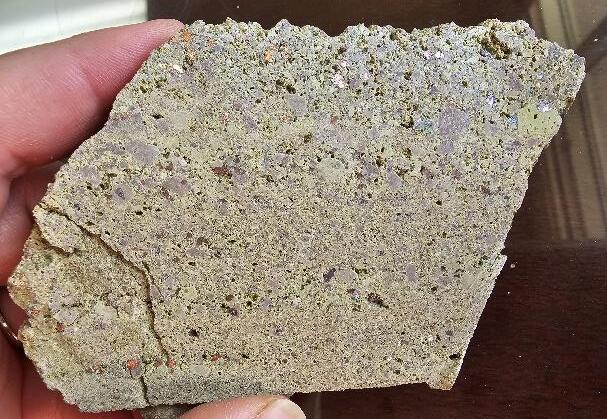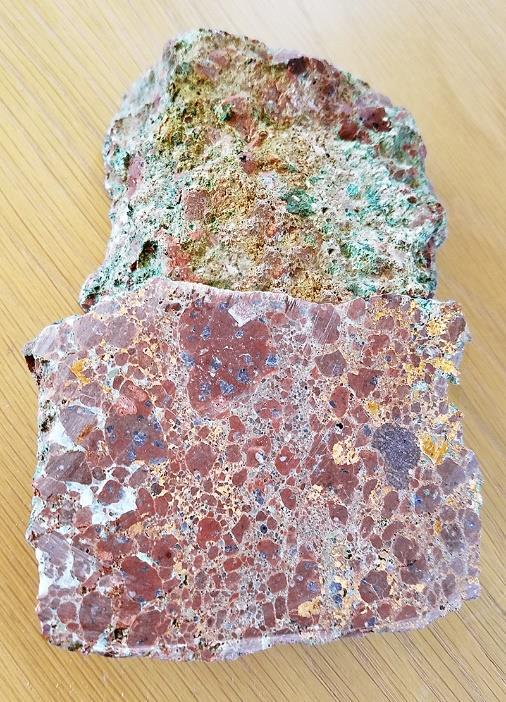
2 minute read
Rock Hounding Copper in the Keweenaw
Written and Interpreted by: Autumn Haagsma
This summer, several members of the MGS/MGRRE team vacationed in the Upper Peninsula of Michigan. A vacation for a geologist cannot be complete without some rock hounding and collecting! Of particular interest were the copper-filled conglomerates in the Keweenaw Peninsula. These beauties can be highly deceiving on the outside, but filled with coppery-goodness on the inside. Many abandoned hoists and their tillings make excellent locations for rock collecting. Always check with local laws and do not trespass if marked as private property. A favorite spot for our team was located near an abandoned hoist. In the tailings we found samples of the Calumet and Hecla (C&H) conglomerates. Not all samples like these will contain copper, but a good way to find copper includes:
1) Using a metal detector – every metal detector is different. A great method is to keep a small piece of copper with you to compare to the chirps of the detector
2) Looking for the classic green/blue weathered discoloration (image below)
C&H conglomerates were interpreted to be deposited in an alluvial fan environment within the ancient rift valley. They are composed of silt to cobble-sized grains composed of clasts of rhyolite and other volcanic rocks. C&H conglomerates can have different shades of red and green matrix with clasts of various sizes, colors, and composition. Copper can be found coating grains or filling in spaces between grains.














